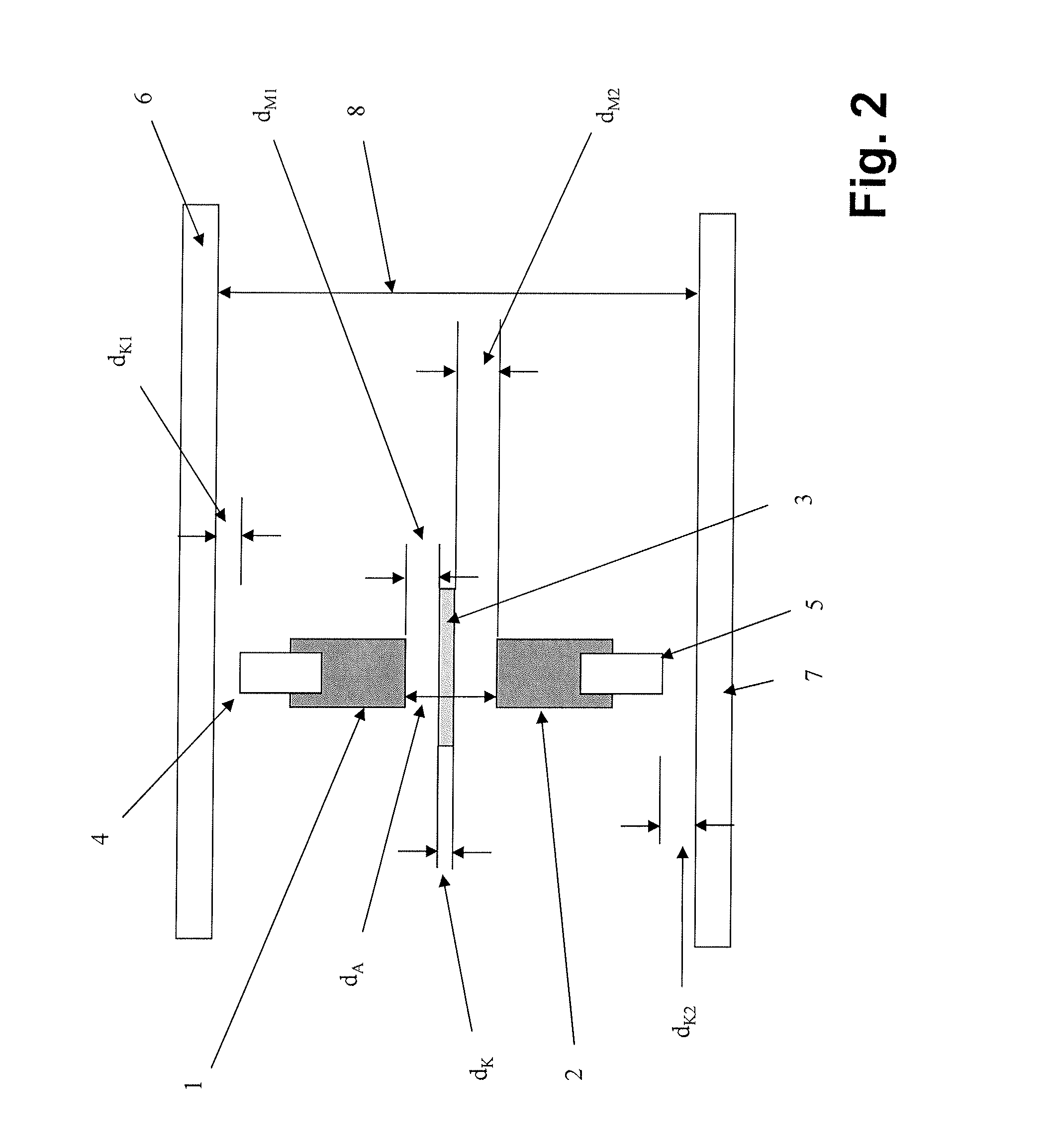Apparatus and Method for Measuring the Thickness of a Measurement Object
a technology for measuring objects and apparatus, applied in the direction of mechanical measuring arrangements, instruments, caliper-like sensors, etc., can solve the problems of critical predefined distance between the two measurement sensors, inability to mechanically stabilize the c-brackets and/or o-frames over the width of the sheet material, and inconvenient use of the measurement object, so as to prevent the wear of the measurement sensor
- Summary
- Abstract
- Description
- Claims
- Application Information
AI Technical Summary
Benefits of technology
Problems solved by technology
Method used
Image
Examples
Embodiment Construction
[0045]FIG. 1 shows a schematic illustration of the basic principle of differential thickness measurement and / or calibration known from the prior art, by means of two distance measurement sensors and a sensor- and calibration arrangement. Each of the distance measurement sensors 1 and 2 takes a measurement relative to the upper or lower surface of the measurement object. The thickness is found by subtracting from the measurement gap dA each measurement reading dM1 and dM2. The basic precondition for a correct thickness measurement reading is that the measurement gap dA, meaning the distance between the two distance measurement sensors 1 and 2, remains constant. This could be achieved by a suitable suspension and guidance of the distance measurement sensors 1 and 2, which nevertheless means great time and effort in the selection of the materials (high-strength, temperature stable materials) and the construction.
[0046]It is substantially simpler, more cost-effective, and more precise i...
PUM
 Login to View More
Login to View More Abstract
Description
Claims
Application Information
 Login to View More
Login to View More - R&D
- Intellectual Property
- Life Sciences
- Materials
- Tech Scout
- Unparalleled Data Quality
- Higher Quality Content
- 60% Fewer Hallucinations
Browse by: Latest US Patents, China's latest patents, Technical Efficacy Thesaurus, Application Domain, Technology Topic, Popular Technical Reports.
© 2025 PatSnap. All rights reserved.Legal|Privacy policy|Modern Slavery Act Transparency Statement|Sitemap|About US| Contact US: help@patsnap.com



